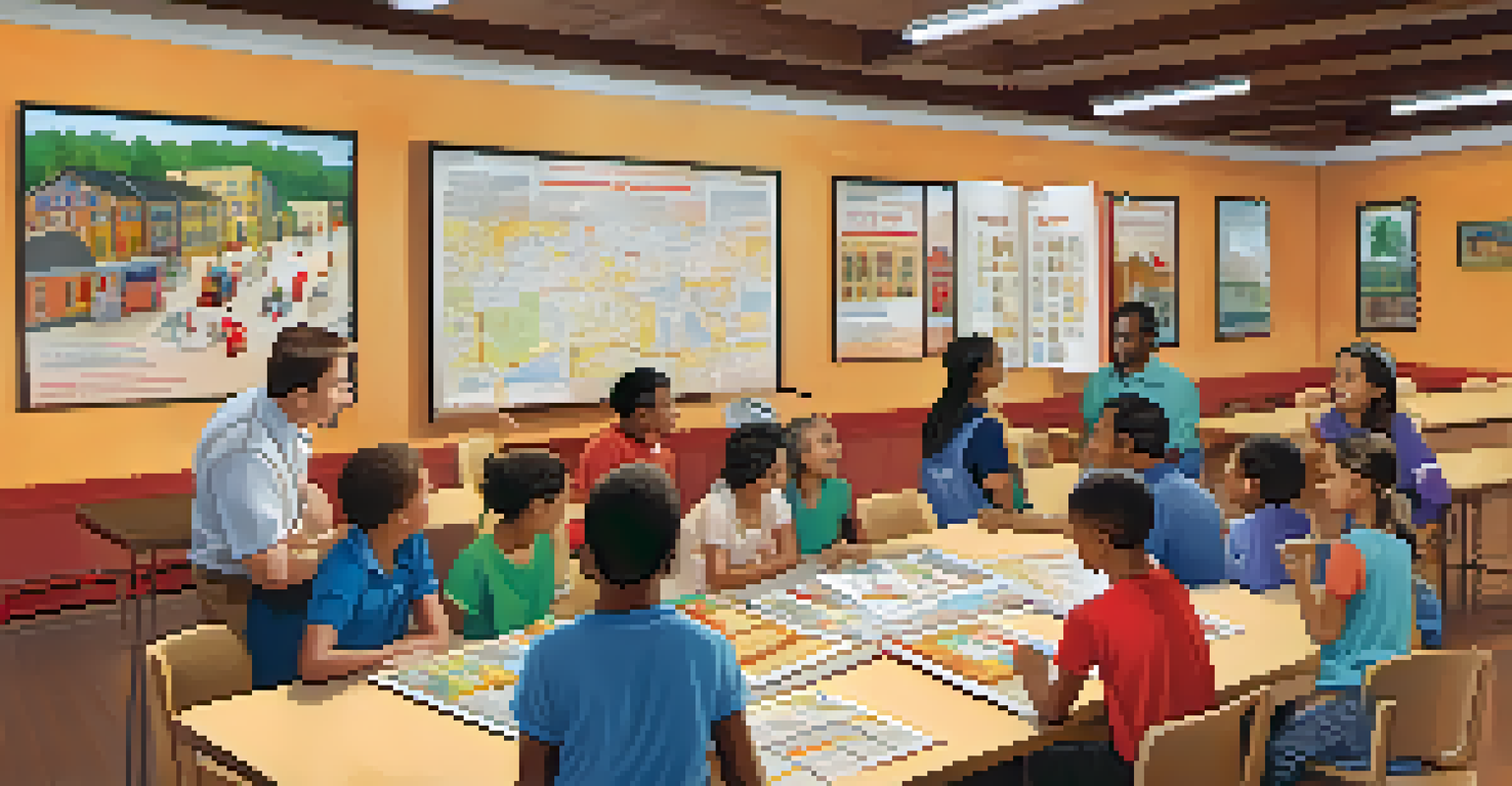The Importance of Fire Drills in Home Safety

Fire Drills: A Critical Component of Home Safety
Fire drills are not just a school activity; they are a vital part of home safety. Practicing these drills helps everyone in the household understand what to do in case of a fire, reducing panic and confusion. Just like a sports team practices plays before a big game, families must rehearse their escape routes and safety protocols. This preparation can be the difference between a safe escape and a tragic outcome.
An ounce of prevention is worth a pound of cure.
In many emergencies, seconds count. When a fire breaks out, the chaos can make it hard to think clearly. Regularly practicing fire drills helps instill a sense of familiarity and confidence, allowing family members to act swiftly and calmly. By knowing exactly where to go and what to do, you can significantly improve your chances of getting out safely.
Moreover, fire drills can highlight potential issues with your home’s safety plan. For instance, you might discover that an escape route is blocked by furniture or that family members don’t know how to operate a window lock. Identifying these problems during practice ensures they can be addressed before a real emergency arises.
Creating a Fire Escape Plan for Your Family
Creating a fire escape plan is the first step towards preparedness. Start by mapping out all potential exits in your home, including doors and windows. It's important to ensure that every family member knows at least two ways to escape from each room, in case one way is blocked by smoke or flames. This planning is similar to creating a roadmap for a long journey; you need to know the best routes to take.

Once your exit routes are established, assign a meeting place outside the home where everyone can gather after escaping. This could be a neighbor's house, a tree, or even a mailbox. Having a designated spot helps account for everyone quickly, which is crucial during an emergency. Think of it as a family reunion point during a chaotic event.
Fire Drills Enhance Home Safety
Regular fire drills prepare families to respond calmly and effectively in case of a fire emergency.
Regularly revisiting and updating your fire escape plan is equally important. Changes, such as new furniture or even the addition of new family members, can impact your plan. By having discussions and practicing your plan periodically, you ensure that everyone remains informed and prepared to act when it matters most.
The Role of Smoke Alarms in Fire Safety
Smoke alarms are your first line of defense against a fire. They alert you to smoke and danger, giving you valuable time to execute your escape plan. It’s essential to have smoke alarms installed on every level of your home, especially near sleeping areas. Just like having a good alarm clock ensures you wake up on time, smoke alarms ensure you wake up to safety.
Safety isn't just a slogan, it's a way of life.
However, having smoke alarms isn’t enough; they require regular maintenance. Test them monthly to ensure they’re functioning properly, and replace the batteries at least once a year. It’s a simple task that can save lives, much like changing the oil in your car to keep it running smoothly.
Additionally, consider installing interconnected smoke alarms. When one alarm goes off, they all sound, alerting everyone in the house regardless of where they are. This interconnectedness can be crucial during the night when family members are asleep, making it easier to wake up to danger.
Educating Children About Fire Safety
Fire safety education for children is crucial to ensure everyone knows how to respond during a fire. Kids should learn about the dangers of fire and the importance of staying low in smoke. Engaging them in this education can turn it into a fun learning experience, like a treasure hunt where they discover the safest escape routes. This way, they understand that safety can be both serious and engaging.
Role-playing fire scenarios can also be a great way to educate children. They can practice what to do when they hear the smoke alarm or see smoke, reinforcing their learning through action. This hands-on approach helps kids remember what to do, much like how they learn to ride a bike by actually getting on one.
Create a Fire Escape Plan
Establishing a clear fire escape plan with multiple exit routes and a meeting place is vital for family safety.
Lastly, encourage children to share their knowledge with friends and relatives. This not only reinforces their understanding but also spreads awareness about fire safety in your community. When kids take pride in teaching others, it creates a culture of safety that extends beyond the home.
Common Fire Hazards in the Home
Identifying common fire hazards around the home is essential for prevention. Things like overloaded electrical outlets, unattended candles, and cooking equipment can all pose significant risks. Just like a detective looking for clues, homeowners must be vigilant about spotting these potential dangers. Awareness is the first step in preventing a fire before it starts.
Another often overlooked risk is the accumulation of clutter. Boxes, magazines, and general debris can catch fire easily and block escape routes. Regularly decluttering your home not only reduces fire hazards but also makes your living space more enjoyable. Think of it as tidying up your emotional space; a clean home can lead to a clear mind.
Finally, ensure that all household appliances are in good working order. Faulty wiring or malfunctioning devices can lead to electrical fires. Schedule regular check-ups for your heating systems and appliances, just as you would for your car. This proactive approach promotes a safer living environment for everyone.
The Importance of Practicing Fire Drills Regularly
Practicing fire drills regularly keeps your escape plan fresh in everyone’s mind. Just like you wouldn’t wait until game day to practice the plays, waiting too long between drills can lead to forgetfulness. By making fire drills a routine part of your family’s schedule, you help ensure that everyone knows what to do instinctively. This repetition builds muscle memory and confidence.
Consider setting a specific date each month for your fire drill. This habit helps reinforce the importance of safety and makes it easier to remember. You might even turn it into a family challenge, rewarding everyone for participating. A little fun can go a long way in turning a serious task into a bonding experience.
Community Awareness Saves Lives
Promoting fire drill awareness within the community fosters a culture of safety and preparedness for everyone.
Finally, after each drill, take time to discuss what went well and what could be improved. This reflection is critical for continuous improvement and can help make future drills more effective. Just as athletes review their performances, your family can learn from each practice to enhance overall safety.
The Benefits of Fire Drill Awareness in Communities
Fire drill awareness extends beyond your home and into the community. When neighbors practice their fire drills, it fosters a culture of safety that can save lives. Think of it as a neighborhood watch for fire safety; the more people are aware, the more prepared everyone is. This collective vigilance enhances the safety net for everyone living in the area.
Communities can organize events or workshops focused on fire safety education. These gatherings not only share knowledge but also encourage families to work together on safety plans. It’s a great way to build relationships while ensuring everyone is ready to respond in case of an emergency. Just like a community picnic brings people together, so too can fire safety initiatives.

Finally, establishing a network of support within your community can be a lifesaver. Neighbors can look out for one another, sharing resources and tips on fire safety. This sense of community can make a significant difference, ensuring that everyone knows how to react during a fire, just as we rely on each other in times of need.